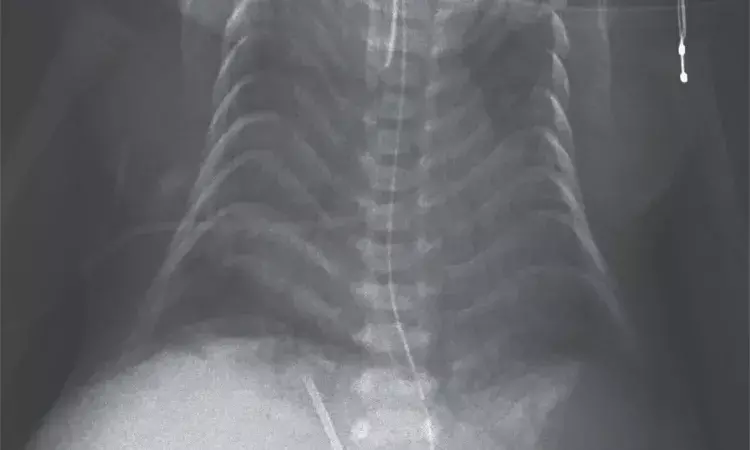- Home
- Medical news & Guidelines
- Anesthesiology
- Cardiology and CTVS
- Critical Care
- Dentistry
- Dermatology
- Diabetes and Endocrinology
- ENT
- Gastroenterology
- Medicine
- Nephrology
- Neurology
- Obstretics-Gynaecology
- Oncology
- Ophthalmology
- Orthopaedics
- Pediatrics-Neonatology
- Psychiatry
- Pulmonology
- Radiology
- Surgery
- Urology
- Laboratory Medicine
- Diet
- Nursing
- Paramedical
- Physiotherapy
- Health news
- Fact Check
- Bone Health Fact Check
- Brain Health Fact Check
- Cancer Related Fact Check
- Child Care Fact Check
- Dental and oral health fact check
- Diabetes and metabolic health fact check
- Diet and Nutrition Fact Check
- Eye and ENT Care Fact Check
- Fitness fact check
- Gut health fact check
- Heart health fact check
- Kidney health fact check
- Medical education fact check
- Men's health fact check
- Respiratory fact check
- Skin and hair care fact check
- Vaccine and Immunization fact check
- Women's health fact check
- AYUSH
- State News
- Andaman and Nicobar Islands
- Andhra Pradesh
- Arunachal Pradesh
- Assam
- Bihar
- Chandigarh
- Chattisgarh
- Dadra and Nagar Haveli
- Daman and Diu
- Delhi
- Goa
- Gujarat
- Haryana
- Himachal Pradesh
- Jammu & Kashmir
- Jharkhand
- Karnataka
- Kerala
- Ladakh
- Lakshadweep
- Madhya Pradesh
- Maharashtra
- Manipur
- Meghalaya
- Mizoram
- Nagaland
- Odisha
- Puducherry
- Punjab
- Rajasthan
- Sikkim
- Tamil Nadu
- Telangana
- Tripura
- Uttar Pradesh
- Uttrakhand
- West Bengal
- Medical Education
- Industry
X ray of newborn had coat hanger appearance- Rare case of Wang syndrome reported

Dr Faeq Al-Mudares at Texas Children's Hospital, Houston, Texas and colleagues have reported an unusual case of Paternal uniparental disomy in a neonate whose ribs appeared as coat hanger in X-ray chest.The case has been published in the New England journal of Medicine.
Paternal uniparental disomy (UPD) of chromosome 14 (Wang syndrome) is a rare disorder due to abnormal chromosome inheritance; both chromosomes 14s are inherited from the father with no contribution from the mother. It is characterized by facial abnormalities, abdominal wall defects, placentomegaly, poly- hydramnios, and a small bell-shaped thorax with "coat- hanger" appearance of the ribs constituting its prominent pathognomonic feature.
In the instant case ,respiratory distress developed in a male neonate immediately after birth at 28 weeks of gestation. The pregnancy had been complicated by preeclampsia, and delivery was performed by emergency cesarean section. The infant underwent intubation, and surfactant was administered through the endotracheal tube. Physical examination showed a giant omphalocele, webbed neck, and deformity of both hands. Antenatal ultrasonography at 22 weeks of gestation had shown the presence of an omphalocele and polyhydramnios. Chest radiography on the first day of life showed a narrowing of the rib cage with crowding of the ribs in a "coat hanger" appearance. On the basis of antenatal studies and the clinical presentation, a diagnosis of paternal uniparental disomy 14 was suspected. This disorder is caused by the inheritance of two copies of chromosome 14 from the father, resulting in a distinctive phenotype that includes the characteristic "coat hanger" deformity of the ribs. Genetic testing confirmed the diagnosis. After receiving ventilator support for 4 weeks, the infant died from a ruptured omphalocele and septic shock.
For further reference log on to:
Dr Kamal Kant Kohli-MBBS, DTCD- a chest specialist with more than 30 years of practice and a flair for writing clinical articles, Dr Kamal Kant Kohli joined Medical Dialogues as a Chief Editor of Medical News. Besides writing articles, as an editor, he proofreads and verifies all the medical content published on Medical Dialogues including those coming from journals, studies,medical conferences,guidelines etc. Email: drkohli@medicaldialogues.in. Contact no. 011-43720751


